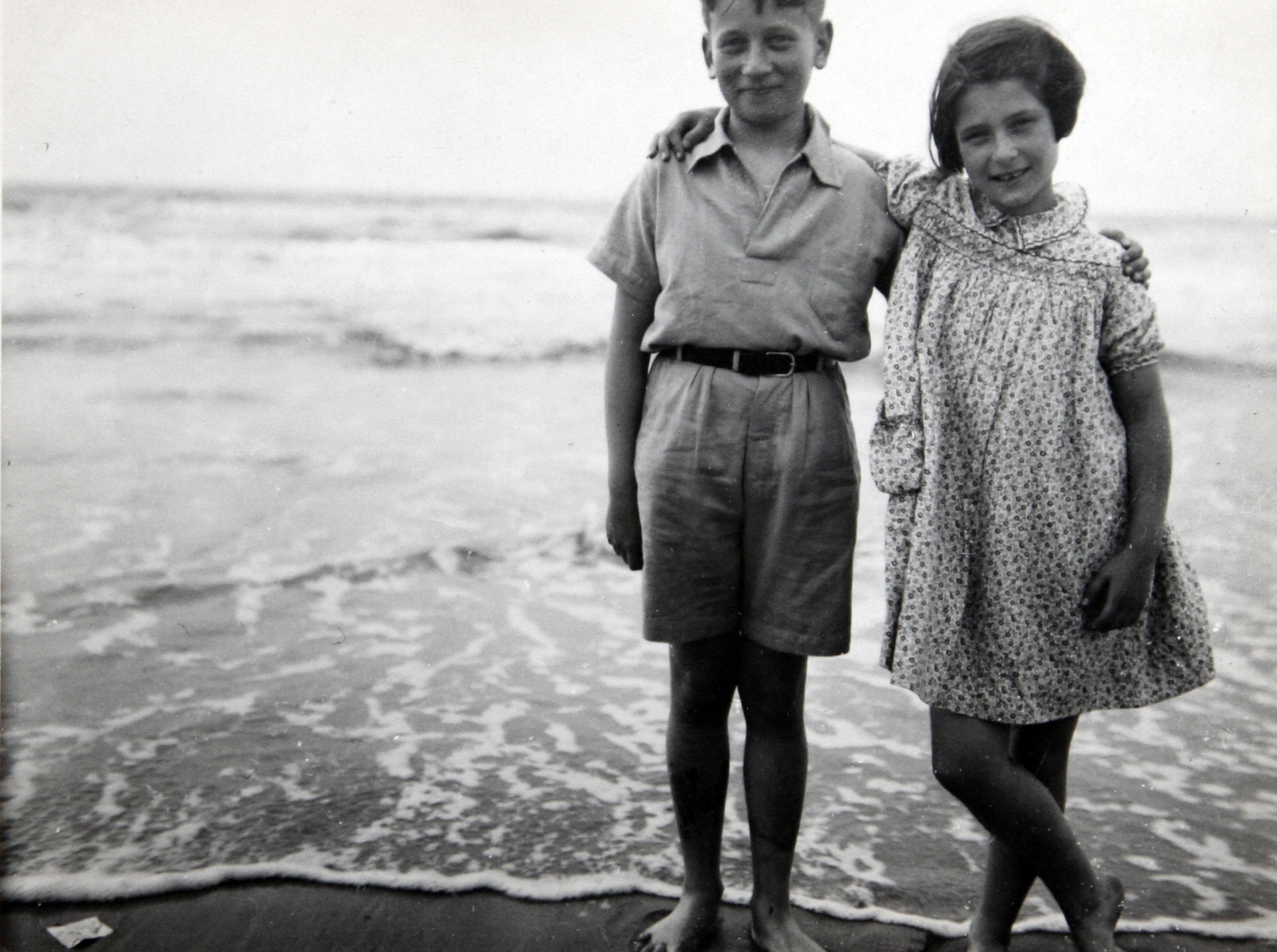Galleries
Just before Irene and her family were sent away to concentration camps they gave their photo albums to a neighbor in Amsterdam. The images from Germany and the Netherlands became some of the only family keepsakes following the war.
Irene with her father John Hasenberg in their Berlin home, circa 1934.
Germany
Irene's family had deep roots in Germany. Her grandparents, parents, and extended family grew up there. They started businesses. Her father served as a German officer in the First World War. Leaving the country in the face of Nazi oppression was a difficult decision for Irene's parents, and not all her family was permitted to go.
Irene and her brother Werner, circa 1939.
The netherlands
Irene's family moved to Amsterdam to put distance between them and Nazi's power, but it didn't prove far enough. In 1940, Germany invaded the Netherlands and the Hasenbergs endured growing oppression until they were swept up by the Nazis and send to camps.
Irene at the displaced persons camp in Algeria, 1945.
Camps
The Hasenbergs were first sent to Camp Westerbork, a transit camp, and finally to the dreaded Bergen-Belsen concentration camp. After almost two years they were exchanged for German prisoners held by the Allies. Irene's Pappi died on the train out of camp, and she was separated from her Mutti and brother for a year and a half, spending most of that time in a displaced persons camp in Algeria.
Newlywed Irene with her husband Charlie Butter.
America
In America, Irene was advised to not talk about her experience in the camps. She concentrated on school, getting her undergraduate degree and becoming one of the first women to earn a Ph.D. in economics from Duke. She married, had two children, and settled in Ann Arbor, Michigan where she and her husband were professors at the University of Michigan. In the 1980s, Irene started talking about her experience during World War Two and began her peace work in earnest.
Examples of the hundreds of cards and artwork that Irene receives from students after her talks.
student cards
Irene has spoken hundreds of times before thousands of students of all ages. The students outpouring of appreciation never fails to move Irene, and has been a continued source of inspiration for her.




